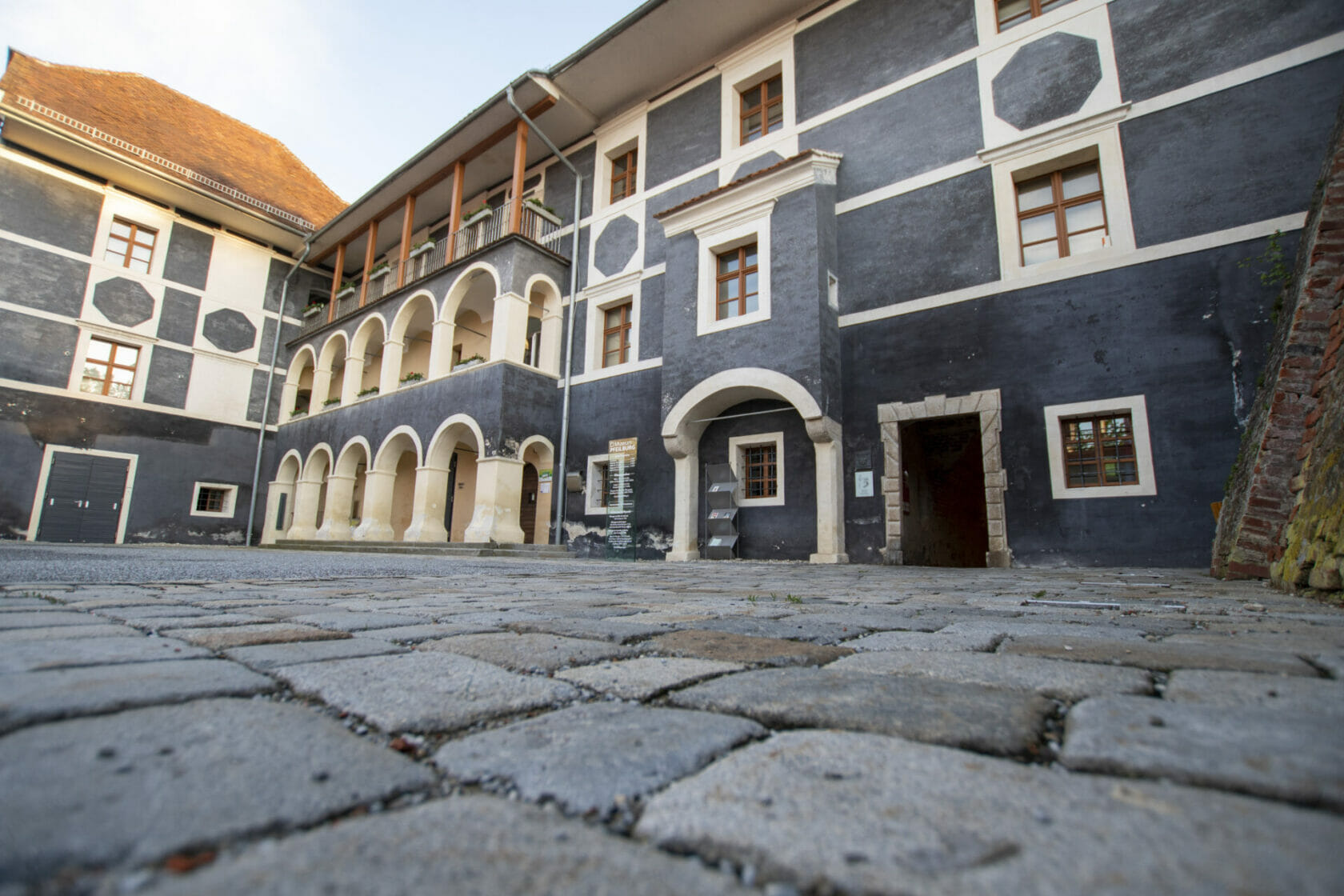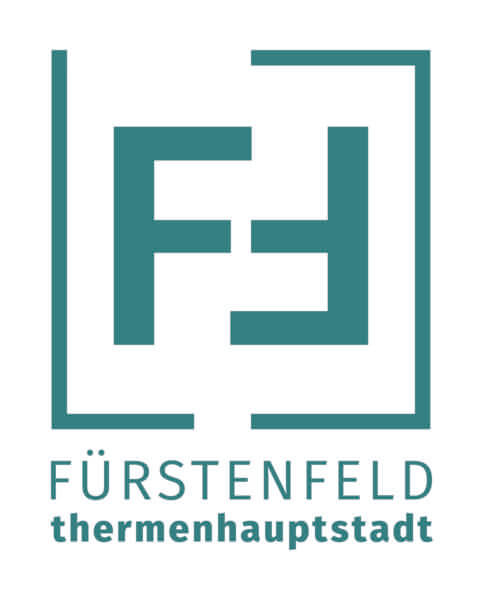Pfeilburg Museum
The Pfeilburg Museum focuses on a variety of topics: the history of the former border town of Fürstenfeld and contemporary history in the “Kruzitürken-Museum”, smoking culture in the “Tobacco Museum” as well as special exhibits that highlight the collections of Fürstenfeld residents.
Experience city history and contemporary history first hand
In the Pfeilburg Castle, the oldest secular building in Fürstenfeld, the ever changing history of the border town of Fürstenfeld from a former fortified city to a handicraft and trading town up until the first half of the 20th century is impressively presented in the “Kruzitürken-Museum”. The special collections of Fürstenfeld residents add an additional charm.
The Pfeilburg castle
The Pfeilburg castle is part of Fürstenfeld’s medieval city walls with the tower house and main building section originating in the 13th century.
It was extended according to the plans of the Italian Domenico dell’Allio in the 16th century when the fortifications were built. At the end of the 17th century it became Austria’s first tobacco factory and since 1725 is owned by the city, was a school as of 1782 and in the 19th and 20th centuries barracks, a military hospital and a poorhouse. Extensive renovations took place from 1996-1999.
Brought back to life
The Pfeilburg castle – one of Fürstenfeld’s oldest buildings – originated in the 13th century and is part of a well preserved fortification from the 16th century. The Museum Association of Fürstenfeld saved the Pfeilburg from demolition in 1975. With donations and public funds large parts of the complex could be preserved. After decades of effort on the part of the Museum Association extensive renovations and revitalization of the Pfeilburg were carried out from 1995 to 1999 by the township. Approximately 1.8 million Euros were invested in the building now protected as a historical conservation site.
The Pfeilburg Museum is one of the city’s most attractive sights. From the former fortified city to a handicraft and trading town and up until the first half of the 20th century the ever changing history of the city is documented in 14 exhibition rooms. Numerous exhibits and models help to visualize the city as it changed through the centuries.
The Pfeilburg Museum received the Austrian Museum Award for its valuable holdings and special presentation techniques of the city’s history and contemporary history on three floors and 700 square metres of display area. Not far from the Hauptplatz Square and right by the fortification walls the Pfeilburg courtyard is used as an appealing venue for concerts, celebrations, festivals and open air events.
The city and the Tobacco Museum
Two long-term exhibitions are dedicated to two topics of historical significance for Fürstenfeld. The period of military attacks led by the Turks and Kurucs are documented in the “Kruzitürken Museum”. In contrast the “Tobacco Museum” is dedicated to the manufacturing of tobacco which strongly influenced economic life in Fürstenfeld and environs until the recent past. In 1693 Austria’s first tobacco factory was built in the Pfeilburg Castle in Fürstenfeld making it one of the world’s oldest. Valuable exhibits from the former Vienna Tobacco Museum are also on display. In addition, special exhibitions at the Pfeilburg Museum deal with special collections and topics specific to Fürstenfeld.
Journey through time in the thermal spa capital along Fürstenfeld’s Festungsweg path
Discover the former fortification city of Fürstenfeld with its medieval buildings and mysterious bunkers – from the siege of the Turks to WWII – with impressive videos and animated features along the path to the various stops. A highlight is the crossing of the 130 year-old iron bridge 18 metres high.
Journey through time in the thermal spa capital
The cityscape of Fürstenfeld as a former border town is distinct with the imposing remnants of the old fortifications. The Festungsweg path leads you to places just full of history and allows insight into the exciting history of the castle city. The perfect place to begin is the Fürstenfeld’s Pfeilburg castle with its museums about the history of the city, contemporary history, the tobacco culture all around Fürstenfeld and special exhibits.
By the way: with your special discount “GenussCard” the guided tour is free!
Highlights along the Festungsweg path
- Discover the former castle city of Fürstenfeld
- An exciting journey into the past
- Medieval fortifications, mysterious bunkers from the Second World War
- Impressive videos and animated features
- An over 130 year-old iron bridge: 18 metres high
Fortifications of the city of Fürstenfeld
Fürstenfeld was founded as a sovereign city in 1170 by Margrave of Styria Ottokar IV to serve as protection for the empire’s borders in the East and as a trading town. The city is first mentioned in a document dated 1178. At this time the market was protected by walls and towers and was nestled into the castle located high above the Feistritz River and the commandery of the Order of Saint John. The Order also held the parish rights for the towns of Altenmarkt and Übersbach and from early on dominated the region on the border to Lafnitz. In the 16th and 17th century the medieval fortifications were extended and bastions were added.
In past years Fürstenfeld’s city fortifications have been restored and can now be experienced as part of the Festungsweg path with its 13 informative stops. The Ritterorden Order of Knights Bike Tour also gives information on the works of the Order of Saint John in the Fürstenfeld region, Altenmarkt and Übersbach and connects three historically significant church complexes.
Augustinian Hermitage Church
In 1362 the citizens of Fürstenfeld requested that Duke Rudolf IV allow the settlement of an Augustinian hermitage in order to provide a religious counterbalance to the noble commanderies. From 1365 to 1368 the church and the monastery were built.
The monastery consisted of an inner courtyard with cloister that was surrounded by three wings. The monastery was consecrated by Archbishop Ortholph of Aponia. In 1480 troops of the Hungarian King Matthias Corvinus pillaged it completely. In 1503 and 1685 fires caused severe damage.
In 1945 the church was once again damaged. In the years following 1978 the church was thoroughly renovated and gothic frescos were uncovered showing apostles and prophets in a circular medallion of the sanctuary. At the base of the ribbed vaults large-scale frescos of kings and prophets became visible on the southern wall. One is believed to represent Duke Rudolf IV, another shows a Turkish building and a Turk wearing a turban. The frescos are the work of Johannes Aquila, as a plaque at the church entrance commemorates.

